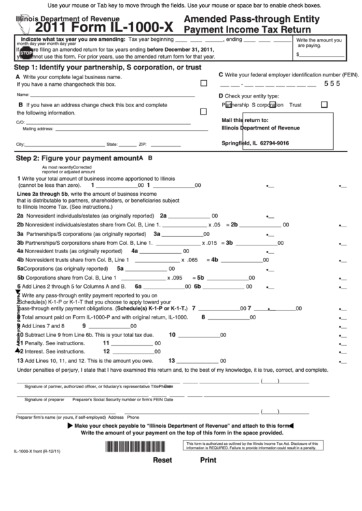
Therefore, there is no change in the journal entry in case of transportation business. If the commodities are included in the inventory, the charges are booked to the cost of goods sold when they are received. When calculating transportation costs, significant allocations include freight in and freight out. If a customer does not intend to keep the products in stock, the cost must be expensed accordingly. Buyers and sellers must determine who is liable for shipping when negotiating contracts. Improper freight classification of inbound and outbound freight might alter the gross margin of the receiving company.
- Ownership of the product is the trigger that mandates that the asset be included on the company’s balance sheet.
- Depending on the accounting treatment used, Carriage Inwards can either be found in the Balance Sheet or in the Cost of Goods Sold in the Income Statement.
- There isn’t any specific rule that the freight charges (either in or out) are to be incurred by the Entity itself (buyer in case of purchases and seller in case of sales).
- If FOB destination point is listed on the purchase contract, this means the seller pays the shipping charges (freight-out).
It is useful to note that the company usually calculate the freight-out cost and include it in the invoice price so that it can cover such cost. By doing this, the company can avoid the decrease of the profit margin due to it bears the delivery expenses on the goods sold and delivered to customers. When the company bears the transportation cost when making the sale, it can make the freight-out journal entry by debiting the freight-out account and crediting the cash account. When you separate freight cost accounting, some of the costs are controllable and some are not. In this journal entry for delivery of goods to our office, we separate the $200 amount of the delivery cost and record it in a separate account of the freight-in. This is because we use the periodic inventory system in which we do not need to update the balance of the inventory for the $5,000 purchase yet.
How to Record Accrued Salaries? (Definition, Journal Entries, and Example)
Freight-in refers to the shipping costs for which the buyer is responsible when receiving shipment from a seller, such as delivery and insurance expenses. When the buyer is responsible for shipping costs, they recognize this as part of the purchase cost. This means that the shipping costs stay with the inventory until it is sold. The cost principle requires this expense to stay with the merchandise as it is part of getting the item ready for sale from the buyer’s perspective. The shipping expenses are held in inventory until sold, which means these costs are reported on the balance sheet in Merchandise Inventory. When the merchandise is sold, the shipping charges are transferred with all other inventory costs to Cost of Goods Sold on the income statement.

Freight charges can be handled in much the same way as other general business expenses. However, there are two significant differences between freight charges and other business expenses. Unlike most business expenses, freight charges can either be paid by the person shipping out the goods or by the person receiving the goods. Another factor complicating matters is that if freight is part of the cost of an asset, it must be recorded and included in the asset’s overall value. Merchandise Inventory increases (debit), and Cash decreases (credit), for the entire cost of the purchase, including shipping, insurance, and taxes. On the balance sheet, the shipping charges would remain a part of inventory.
Importance of Accurate Record Keeping For Optimized Freight Cost Accounting
Likewise, the journal entry for delivery of goods in or freight-in cost will the will be the inventory in and the cash-out or accounts payable as we include the delivery cost into the cost of inventory goods. In this journal entry, the freight-out account is an expense account that is charged to the income statement for the period. Similarly, total assets on the balance sheet decline while costs on the income statement increase by the same freight-out cost in this journal entry. Freight-in is capitalized onto the balance sheet since it’s considered a production cost.
SHAREHOLDER ALERT: Pomerantz Law Firm Investigates Claims … – The Bakersfield Californian
SHAREHOLDER ALERT: Pomerantz Law Firm Investigates Claims ….
Posted: Fri, 01 Sep 2023 18:47:34 GMT [source]
Knowing how to handle freight charges can improve a business’s bottom line. Managers need to know how to record freight charges in accounting to make accurate financial projections and ongoing business decisions. In this journal entry, the $200 cost of delivery of goods is included in the cost of the purchased goods. Hence, the balance of our inventory here will increase by $5,200 after the purchase on February 1. This is due to the cost of purchases should include any cost necessary to bring the goods to our place. There isn’t any specific rule that the freight charges (either in or out) are to be incurred by the Entity itself (buyer in case of purchases and seller in case of sales).
How is freight-in and freight-out treated in the financial statements?
Transportation costs are commonly assigned to either the buyer or the seller based on the free on board (FOB) terms, as the terms relate to the seller. Transportation costs are part of the responsibilities of the owner of the product, so determining the owner at the shipping point identifies who should pay for the shipping costs. The seller’s responsibility and ownership of the goods ends at the point that is listed after the FOB designation. Thus, FOB shipping point means that the seller transfers title and responsibility to the buyer at the shipping point, so the buyer would owe the shipping costs.
- In this journal entry, total expenses on the income statement increase as we charge the delivery cost to the expense on the income statement.
- It is useful to note that the company usually calculate the freight-out cost and include it in the invoice price so that it can cover such cost.
- On the same day, Metro company pays $320 for freight and $100 for insurance.
- In addition to freight in and freight out, the carriage in and out is known as a carriage in and out, respectively.
- Managers need to know how to record freight charges in accounting to make accurate financial projections and ongoing business decisions.
If, however, someone buys something from you and you have to pay the freight to get it to them, that gets recorded like any other freight expense. There are certain concerns that you have when you’re accounting for freight costs. In either case, when it comes to the journal entry for the delivery of goods, we should not mix the cost of delivery of goods out or freight-out with the cost of delivery of goods in or freight-in. Freight in is the expense for purchases of goods, and freight out is for the sale of goods. On the other hand, the firm must include the freight-in cost in the cost of inventory bought under the perpetual inventory method.
Freight-out Journal Entry
The common reasons of such difference include inaccurate record keeping, normal shrinkage, and shoplifting etc. To learn how to record freight charges in accounting, first determine the classification for the freight charges. For FOB shipping point, the sale occurred at the shipping point – meaning your company’s dock. FOB destination means that the sale will occur when it arrives at the destination – at the buyer’s receiving dock. Costs incurred for transforming an asset to a condition that is suitable for sale are added and recorded as cost of the asset, not as a separate expense.

This is due to the two systems having different treatments on the inventory in or out. Specifically, if we use the periodic inventory system, we only need to update the balance of the inventory periodically (e.g. once a year). On the other hand, if we use the perpetual inventory system, we will need to update the inventory balance every time there is an inventory in (purchase) or inventory out (sell). Freight Charge is an expenditure, and Shipping Costs Payable are a Liability account.
First, let’s see how the periodic system evolved into the more commonly used perpetual system, and how that system is both similar to and different than the periodic system. You need a downstream system to properly code those invoices as they come through. Freight in and freight out refer to carriages going irs statute of limitations from community tax resolution in and going out, respectively. In addition to freight in and freight out, the carriage in and out is known as a carriage in and out, respectively. Depending on the accounting treatment used, Carriage Inwards can either be found in the Balance Sheet or in the Cost of Goods Sold in the Income Statement.
Digital Freight Forwarder Market Size, Status, Global Outlook 2023 … – Digital Journal
Digital Freight Forwarder Market Size, Status, Global Outlook 2023 ….
Posted: Tue, 05 Sep 2023 12:19:48 GMT [source]
When a company, as the buyer, is required to pay for the transportation of products purchased from suppliers, freight-in costs are incurred. Freight-out is the cost that incurs when the company pays the transportation fee for the delivery of goods to the customers. Likewise, the company will need to make the journal entry for freight-out as an expense when it occurs. In other terms, the value of inventory is simply the sum of the expenditures mentioned above. When doing so, make sure your company is following the periodic system of stock management. As a result, when we acquire goods, we document “buying” instead of “inventories” in our platform because we never maintain everlasting (constantly updated) notes of our stock (an expense account).
Freight-out is the firm’s expense when it pays the transportation price to deliver products to customers. Similarly, the corporation must record it as a cost in the journal when freight-out happens. In this journal entry, both total assets on the balance sheet decrease by $100 while expenses on the income statement increase by the same amount.

 | Tutti i diritti riservati 2022 © AS P.r.i
| Tutti i diritti riservati 2022 © AS P.r.i